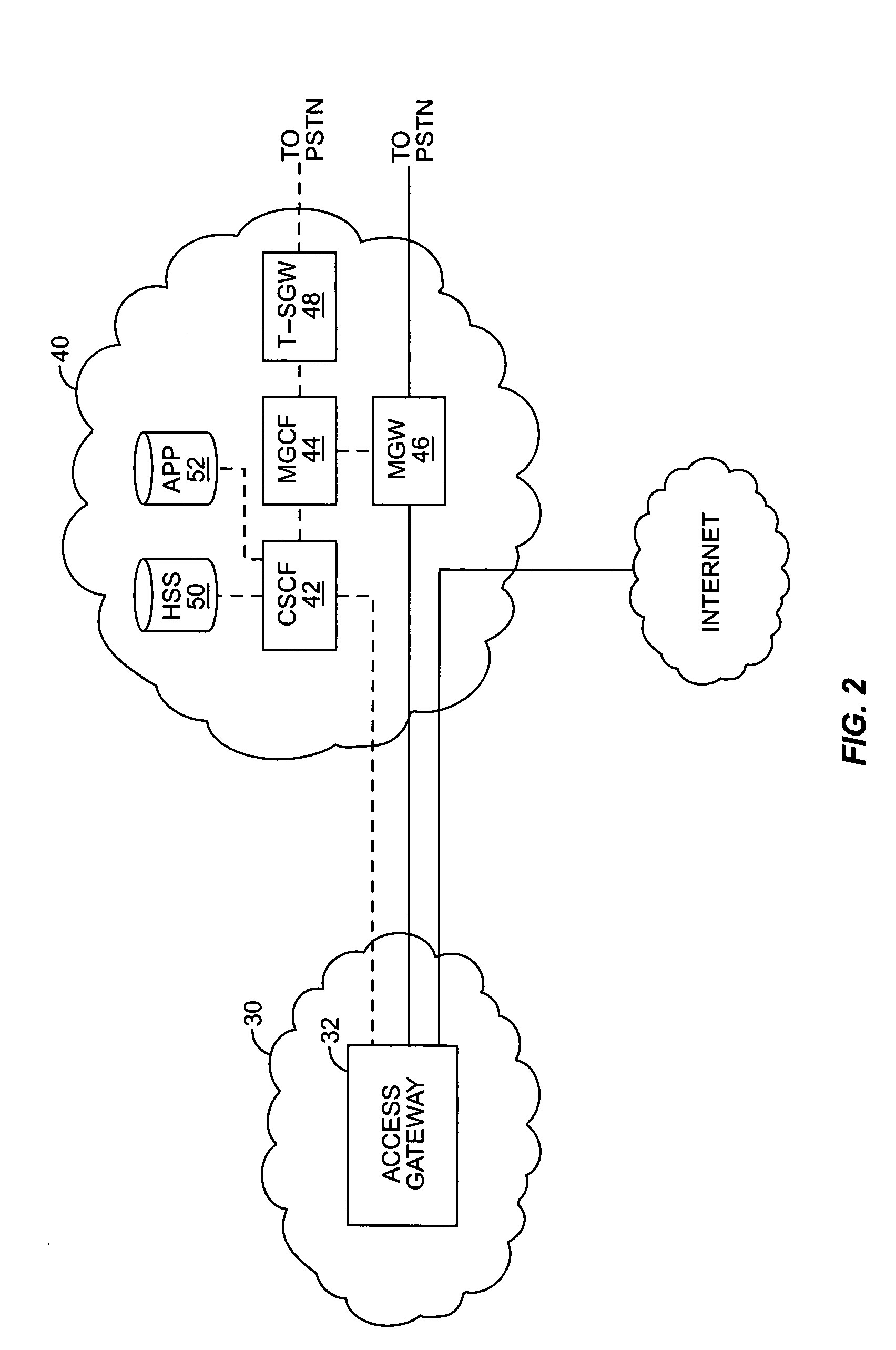Method to facilitate distribution of group identifications for push-to-talk groups
a push-to-talk group and group identification technology, applied in the direction of broadcast service distribution, electrical equipment, connection management, etc., can solve the problems of cumbersome user's group list, cumbersome process of adding a predefined group to one's group list, and long and difficult to remember group identifiers
- Summary
- Abstract
- Description
- Claims
- Application Information
AI Technical Summary
Benefits of technology
Problems solved by technology
Method used
Image
Examples
Embodiment Construction
[0015]FIG. 1 illustrates a mobile communication network 10 in which the present invention may be employed. While the present invention is described in the context of a mobile communication network 10, those skilled in the art will appreciate that the present invention may also be used in fixed networks.
[0016] The mobile communication network 10 comprises a plurality of user terminals 20 (only one is shown), an access network (AN) 30 providing wireless communication services to the user terminals 20, and an IP Multimedia Subsystem (IMS) 40. The access network 30 is preferably a packet-switched network that uses any known access technology, such as TDMA or CDMA. The access network 30 may, for example, comprise a General Packet Radio Services (GPRS) network, cdma2000 network or UMTS network. The access network 30 provides a connection to the Internet 12 or other packet data network (PDN) for packet switched services such as web browsing and email, and may provide a connection to the P...
PUM
 Login to View More
Login to View More Abstract
Description
Claims
Application Information
 Login to View More
Login to View More - R&D
- Intellectual Property
- Life Sciences
- Materials
- Tech Scout
- Unparalleled Data Quality
- Higher Quality Content
- 60% Fewer Hallucinations
Browse by: Latest US Patents, China's latest patents, Technical Efficacy Thesaurus, Application Domain, Technology Topic, Popular Technical Reports.
© 2025 PatSnap. All rights reserved.Legal|Privacy policy|Modern Slavery Act Transparency Statement|Sitemap|About US| Contact US: help@patsnap.com



